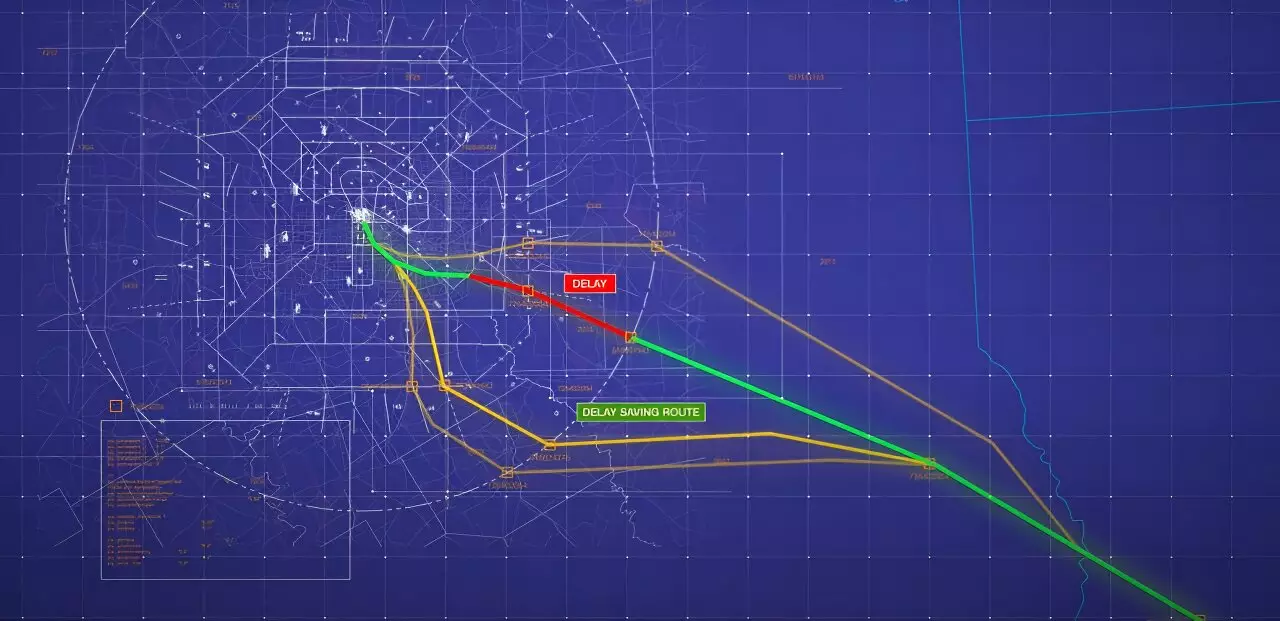In the modern age of technology, data is crucial for optimizing processes and improving efficiency. Just as smartphone navigation apps provide us with the best routes to our destinations, NASA has developed a Digital Information Platform (DIP) to revolutionize the aviation industry. By gathering and processing data related to weather, potential delays, and other crucial information, the DIP aims to assist air traffic managers in maintaining the smooth flow of airplanes through the skies.
The Digital Information Platform serves as a living database that collects key data from various flight participants, including airlines and drone operators. This data is then used to power decision-making tools that can save travel time and enhance overall efficiency in aviation operations. NASA’s project manager, Swati Saxena, emphasizes that the DIP is not intended to compete with existing platforms but rather to serve as a reference for industry professionals looking to develop their own digital services. The ultimate goal is to benefit all stakeholders in the aviation industry, from the Federal Aviation Administration to commercial airlines and even the flying public.
The impact of the Digital Information Platform goes beyond just saving time on journeys. NASA has collaborated with airlines to demonstrate the effectiveness of a traffic management tool that not only improves traffic flow at airports but also reduces jet fuel consumption and carbon emissions. By making the data gathered through these collaborations publicly available, the DIP enables users to access valuable information that can enhance aviation operations and safety.
NASA envisions a future of aviation that involves next-generation tools and technologies to create a highly automated, safe, and scalable airspace environment. With the anticipated increase in air traffic over the coming decades, the National Airspace System will face significant challenges in keeping up with demand. The DIP represents a critical piece of the puzzle in ensuring that the U.S. aviation infrastructure is prepared for this influx of traffic.
To bring this vision to life, NASA’s aeronautical innovators are currently evaluating the DIP and its services at airports in Texas. These digital tools are already being utilized by airline partners to improve efficiency in airspace operations, with plans to expand their use to other regions in the near future. The results from initial implementations have been promising, with substantial fuel savings and improvements in air traffic flow already evident in the Dallas area.
As NASA continues to collaborate with airlines and the aviation industry, the partnership ecosystem surrounding the Digital Information Platform is expected to expand further. The potential for using machine learning and artificial intelligence to streamline air traffic and enhance safety is vast. By leveraging these advanced technologies, the aviation industry can look forward to a future of increased efficiency, safety, and sustainability for both passengers and industry professionals alike.
The Digital Information Platform developed by NASA has the potential to revolutionize the aviation industry by providing valuable data and tools to optimize air traffic operations. By embracing this innovative technology, stakeholders in the aviation sector can pave the way for a more efficient, safe, and sustainable future in airspace management. NASA’s commitment to advancing the capabilities of the DIP underscores the agency’s dedication to shaping the future of aviation in the 21st century.


Leave a Reply